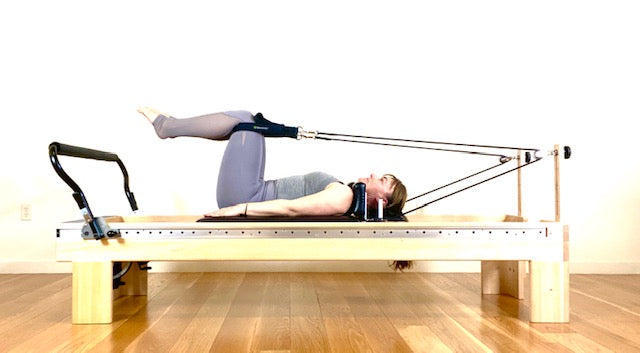"When you have back pain, you go from whatever age you are, directly to 80, without a retirement party!" Unfortunately, back pain is very common pain. In fact, 80% of the US population will develop back pain at some point of their life.
There are a number of causes for back pain. This blog will not go over the causes of back pain but instead focus on back exercises that may help decrease pain by maintaining neutral spine in supine (on your back).
Why is neutral spine so great?
1. It is the optimal position of the lumbar spine - a small arch in the low back area with a vertical pelvis when sitting and standing and a horizontal pelvis when supine. It is the position that allows our bodies to function efficiently without strain and is often stressed in physical therapy.
2. Neutral spine allows your deepest muscles (the most important muscles for back stability) to function effectively. Specifically the Transversus Abdominis (TA) and the Multifidius (M). In fact medical researchers have seen the M turns off from prolonged slouched sitting (how many hours of slouched sitting do you do?) and M also does not spontaneously start to work again after back pain is gone. Below is a picture to demonstrate how the M runs as pairs of small muscles along the spine. You can see how the M are the muscular struts of your spine!

When your back is hurting, often a good place to start working on stabilizing your back is on your back. Understanding neutral spine is all about understanding that your low back and your pelvis are best friends - where one goes the other follows. To find neutral spine you need to find the neutral position of your pelvis - the pelvis should not be tilted posterior nor anterior but level, you could balance a cup of water on your low tummy. If you need more instruction, please check out this short video - it is a fool proof way of knowing if you are in neutral spine.
Once you understand where your neutral spine is, challenge this position with movement of an arm or a leg or both away from center. This is the essence of low back exercises which focus on developing spinal stability. It is always best to start with one leg vs both. The reason for this is that when you lift both legs, your deep stabilizing muscles the TA and M need to be coordinated (medical researchers have discovered that the TA can be slow to activate when back pain is present) and strong enough to handle the weight of the legs ( as mentioned previously, the M associate with the back segment that is effected does not spontaneously turn back on).
Pilates is known as a fantastic method to rehab a back or for that matter any injury. The focus on Pilates is on precision and good technique so that bad habits and compensations are a thing of the past! Pilates equipment can also help support the weight of your legs so that you can advance your low back exercises more quickly. Below are pictures of Bilateral Toe Tap on the reformer with loops around the thighs. The reformers has 5 springs of various tension. Here the spring resistance is helping the individual maintain neutral spine by supporting a portion of the weight of the legs.


To make this type of low back exercise more difficult, place the loops at the feet, which creates a longer lever of force on the back and abdominal muscles to maintain neutral spine position. Another option would be to use less spring resistance, which would mean the individual would need to control more of the weight of their legs vs letting the heavier spring resistance support the weight of the legs. Below is a video of someone doing two exercises challenging neutral spine with the loops at the feet. Notice how he moves with intention and precision.
I invented the patented HANDIBANDS in order to make Pilates reformer exercises possible for the home user. I am a practicing Pilates instructor and physical therapist. Home exercise programs are the backbone (pardon the pun LOL) of any physical therapy exercise program and so I in searching for a solution I created the HANDIBANDS! They are the most versatile resistance bands on the market!

